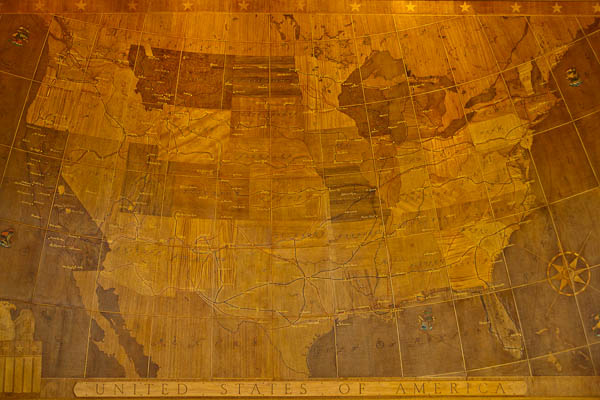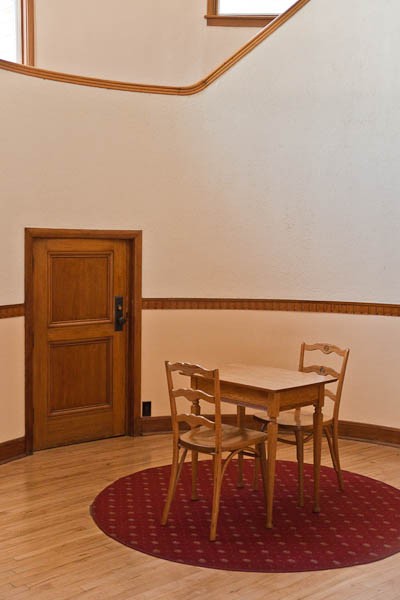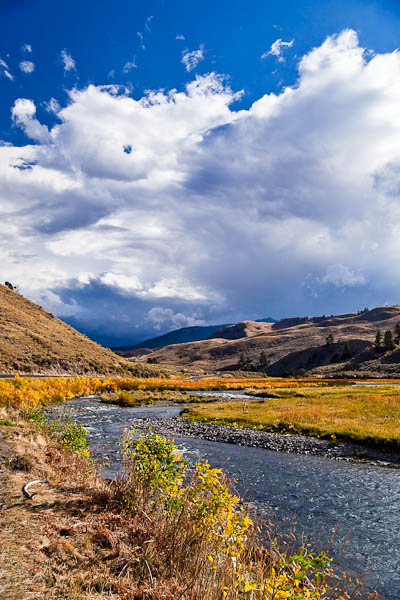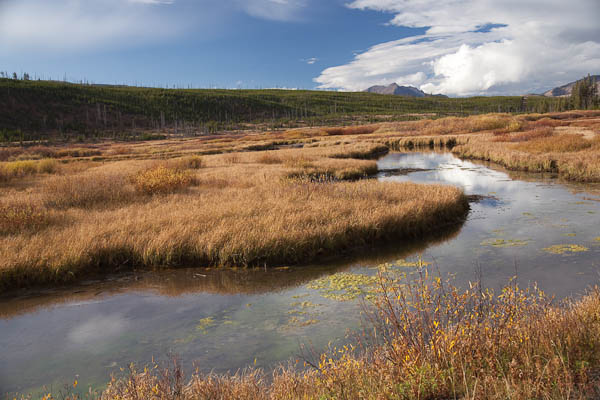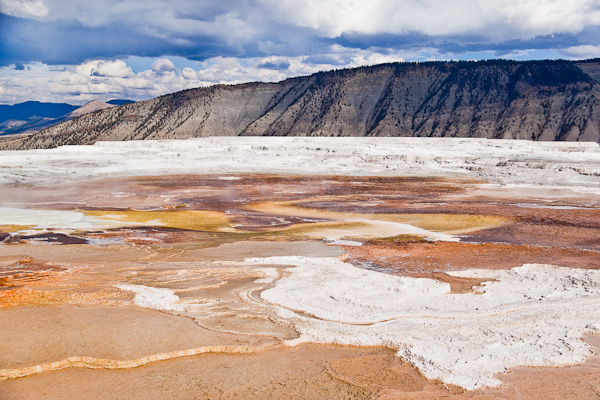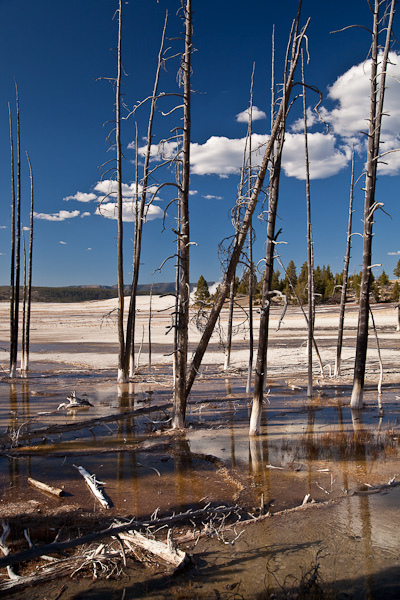Mammoth Hot Springs Hotel in Yellowstone National Park is quite the place. It has an amazing number of things to explore. Designed by architect Robert Reamer, a veteran of park architecture, it was built in 1937, an addition to the National Hotel which had been built two decades earlier. There is a room called the Map Room because its focal point is a wall map, also created by Reamer. The map, probably 8 feet by 6 feet, is constructed, jigsaw-style, of 15 different types of wood. It’s a beautiful piece of craftsmanship, but one thing is odd about it.
When looking at the states that I am most familiar with, I noticed that my hometown is placed about 200 miles north of its actual location. Tucson, Arizona is almost due east of Phoenix. Reamer might have been a popular park architect and a talented woodworker, but his geography references were incorrect.
There were several other comments from people who were looking at the map about the odd placement of cities. Wonder just how many places are marked incorrectly?
